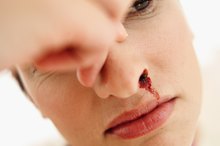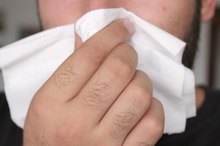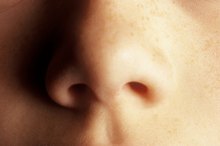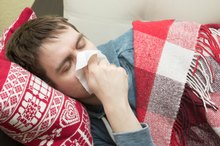What does fact checked mean?
At Healthfully, we strive to deliver objective content that is accurate and up-to-date. Our team periodically reviews articles in order to ensure content quality. The sources cited below consist of evidence from peer-reviewed journals, prominent medical organizations, academic associations, and government data.
- Mayo Clinic: Nosebleeds: First aid
- National Heart Lung and Blood Institute: What is Oxygen Therapy?
- National Heart Lung and Blood Institute: What is Oxygen Therapy?
The information contained on this site is for informational purposes only, and should not be used as a substitute for the advice of a professional health care provider. Please check with the appropriate physician regarding health questions and concerns. Although we strive to deliver accurate and up-to-date information, no guarantee to that effect is made.
Oxygen & Severe Nosebleeds
Nosebleeds are a common side effect for patients undergoing oxygen therapy 3. However, ongoing severe nosebleeds should be brought to the attention of your health care provider to ensure there isn’t another underlying cause 3.
If you are experiencing serious medical symptoms, seek emergency treatment immediately.
Dry Nasal Passage
Oxygen therapy may trigger nosebleeds by drying your nasal passages 3. Furthermore, according to KidsHealth.org, when your nasal membranes dry out, it may cause:
- the interior of your nose to scab over,
- as these wounds break from itching or moving your nose
- they often bleed
In addition, Mayo Clinic explains that nosebleeds begin in your septum, which is the thin membrane that separates your nasal chambers 13.
Nasal Cannula
Nosebleeds During Exercise
Learn More
As the National Heart and Lung Blood Institute explains, oxygen is often supplied to patients through two small plastic tubes or prongs known as a nasal cannula 2. One small tube is placed into each nostril to ensure proper oxygen flow. However, because these tubes can irritate the inside of your nose, they may increase your risk of nosebleeds 3.
Prevention
You can help prevent nosebleeds caused by supplemental oxygen use by using a humidifier to help keep your nostrils moist 3. Your doctor may be also able to recommend a nasal spray that can alleviate your symptoms. In addition, TeensHealth explains that you should try to avoid rubbing or itching your nose and suggests placing a small amount of a lubricant such as petroleum jelly inside each nostril, especially on and around the septum 3.
Warning
How to Treat Nose Bleeds With Blood Thinners
Learn More
If you continue to experience ongoing nosebleeds and the symptoms seem severe, consult your health care provider in order to achieve an accurate diagnosis 3. Frequent nosebleeds can be an indication of a more serious problem 3. In addition, your doctor may be able to help alleviate your symptoms by simply changing your oxygen flow rate or frequency.
Related Articles
References
Writer Bio
Based in San Diego, California, Jill Blessing has been writing since 1997. Her work has been published in "Triathlete" magazine, "CMYK" magazine, "Kansas City Homes & Gardens" magazine and "The Columbia Missourian." She holds a bachelor's degree in journalism from the University of Missouri.









